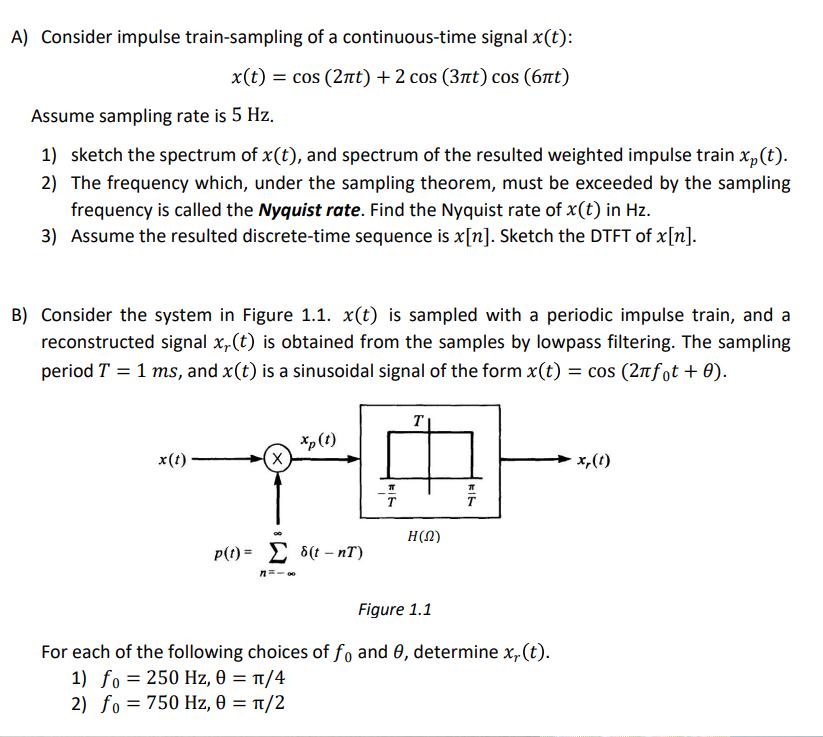Answered step by step
Verified Expert Solution
Question
1 Approved Answer
A) Consider impulse train-sampling of a continuous-time signal x(t): x(t) = cos (2nt) + 2 cos (3nt) cos (6nt) Assume sampling rate is 5

A) Consider impulse train-sampling of a continuous-time signal x(t): x(t) = cos (2nt) + 2 cos (3nt) cos (6nt) Assume sampling rate is 5 Hz. 1) sketch the spectrum of x(t), and spectrum of the resulted weighted impulse train xp (t). 2) The frequency which, under the sampling theorem, must be exceeded by the sampling frequency is called the Nyquist rate. Find the Nyquist rate of x(t) in Hz. 3) Assume the resulted discrete-time sequence is x[n]. Sketch the DTFT of x[n]. B) Consider the system in Figure 1.1. x(t) is sampled with a periodic impulse train, and a reconstructed signal x, (t) is obtained from the samples by lowpass filtering. The sampling period T = 1 ms, and x(t) is a sinusoidal signal of the form x(t) = cos (2nfot + 0). x(t) X xp (1) p(t) = (t - nT) n=100 T H(2) FIL Figure 1.1 For each of the following choices of fo and 0, determine x,. (t). 1) fo = 250 Hz, 0 = /4 2) fo 750 Hz, 0 = /2 = x, (t)
Step by Step Solution
★★★★★
3.56 Rating (149 Votes )
There are 3 Steps involved in it
Step: 1
A1 Spectrum of xt Contains impulses at frequencies 2Hz 3Hz 6Hz Spectrum of xpt Contains impulses at ...
Get Instant Access to Expert-Tailored Solutions
See step-by-step solutions with expert insights and AI powered tools for academic success
Step: 2

Step: 3

Ace Your Homework with AI
Get the answers you need in no time with our AI-driven, step-by-step assistance
Get Started


